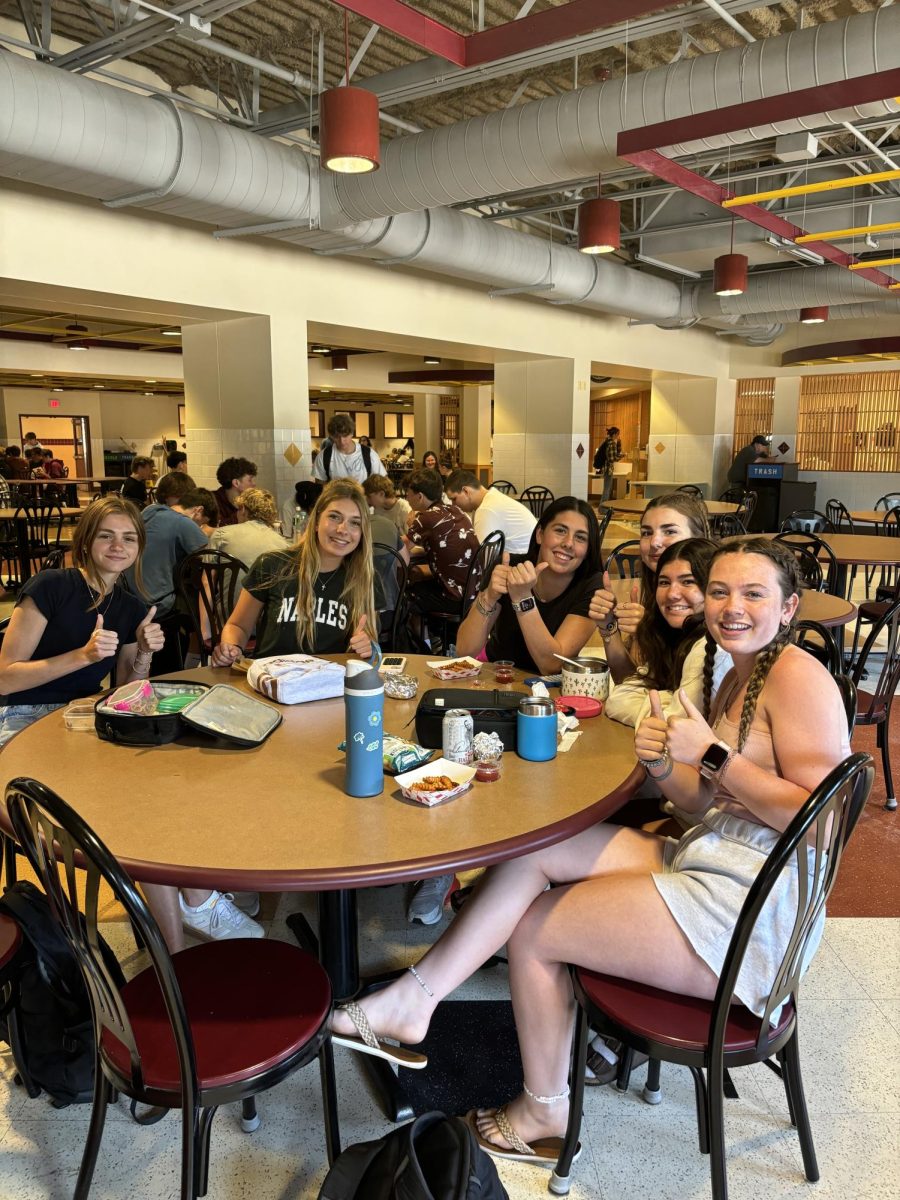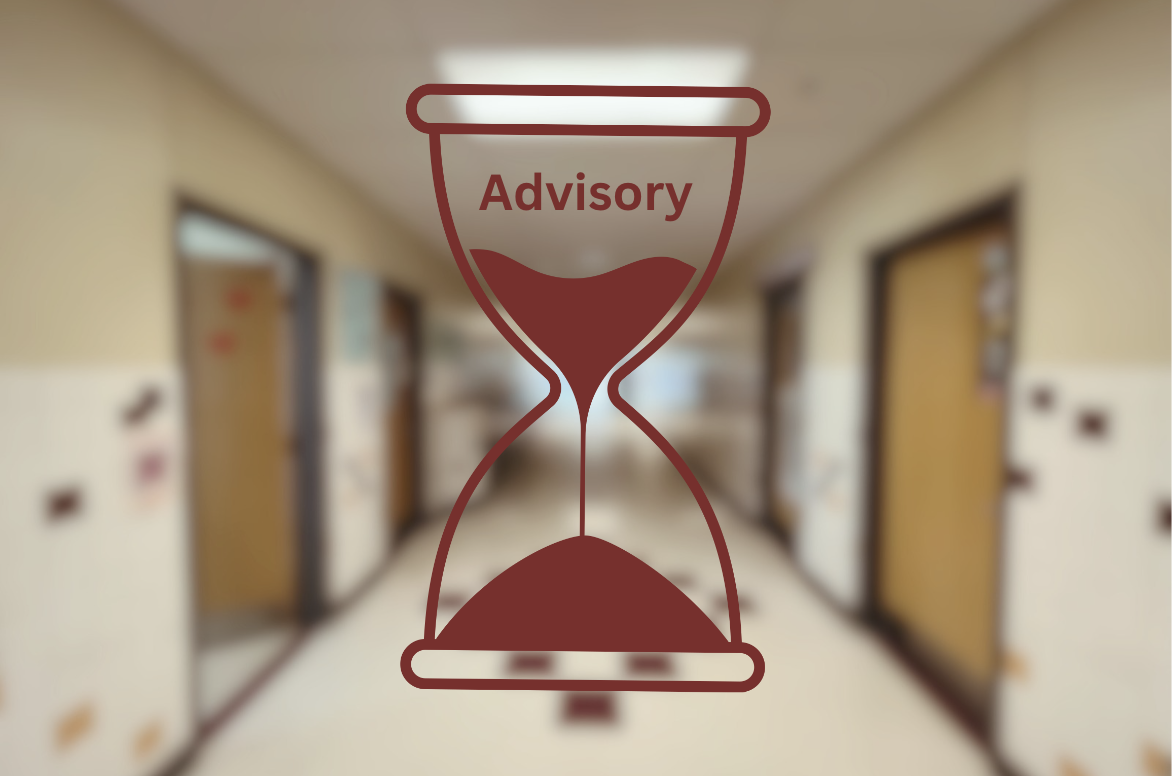I’m betting that almost anyone you know, including you, has had a single granola bar for lunch. Either you’ve had to get homework done, your boss gave you another task, or just not enough time. The lunch time rush is a byproduct of the frantic work culture expected in our society; however, lunch should be a time to slow down and enjoy a break.
”According to nutrition experts, 15 minutes or less is not enough time for children to properly eat and digest their food. When people have less time to eat or when they eat meals faster, calorie consumption increases. According to the U.S. Department of Agriculture (USDA), many unhealthy eating habits can be established during childhood, which has likely contributed to the current obesity epidemic,” states the King County Green Schools Program.
A short lunch period does not provide enough calories as students are not able to eat their entire lunch, which can significantly affect students on free and reduced lunch. A majority of students get 30 to 50 percent of their daily calories from lunch, says the University of Washington School of Public Health. Not allowing students to finish their lunch will decrease nutrients such as Vitamin C and fiber that help kids grow, according to the School Nutrition Association.
It’s no secret that students will eat the less nutritious foods first because they are more appealing than vegetables or fruits. But, processed and sugar-abundant foods have been associated with sleep problems, depression, and obesity. Obesity can affect a child’s self-confidence, mental health, and cognitive growth, according to the Etiology of Obesity.
Portsmouth High School’s 28 minute lunch period is too short to give students those nutrients. Students that get school lunch end up losing 5-15 minutes of eating time while waiting in line, which will not provide students with enough time to gain nutrients.
Providing a longer lunch period will lead to a healthier diet, which impacts cognitive function, such as memory and impulse control, says the National Library of Medicine. Having more time during lunch can also improve academic performance because an extended lunch period will amplify a student’s motivation and mood. Kids will be able to focus on the content of school instead of their hunger.
Lunch is often a social time that can give kids a brain break. When eating, students have discussions with each other that help them learn about their friends and improve conversational skills.
Not allowing students to have this time, “Undermines realization of these benefits as such learning requires time for discourse, instruction, skills practice, and knowledge utilization,” according to the National Library of Medicine.
When students don’t have time to eat the remaining food, it gets thrown out. This is contributing to the national growth in food waste, and could be costing PHS a lot of money. The current national K-12 food waste cost is estimated to be $1.7 billion, says the School Nutrition Association.
Students are being served healthier lunches, but they take longer to eat. Providing a longer lunch will decrease food waste, “The researchers found that students with less than 20 minutes to eat lunch consumed 13% less of their entrées, 12% less of their vegetables, and 10% less of their milk than students who had at least 25 minutes to eat,” says Harvard School of Public Health.
A study conducted by the National Library of Medicine in 2019 that included 38 students found that kids who had a 10 minute lunch compared to a 20 minute lunch consumed 11.3% less fruit and 14.1% less vegetables. It was also reported that, “30-minute lunch periods were associated with greater overall food consumption compared with 20-minute periods, decreasing food waste from 43% to 27%.”
A survey that I managed at PHS concluded that out of 191 people, 30.4% buy school lunches, and 69.1% bring food from home. When asked if the lunch period was longer if they would buy school lunches, 43.5% said yes. A majority of the responses explained that the line is too long and they have too little time to eat.
When questioned if they ever felt stressed because of the length of the lunch period, 46.1% said yes, 21.5% said maybe, 27.7% said no, and the remaining 4.7% agreed that lunch can be stressful. If lunch were longer, 72.8% would be less stressed, 18.8% would maybe be less stressed, and 8.4% would not be affected.
Out of the 191 people surveyed, 84.7% hang out with their friends while they eat, 13.1% sometimes use lunch as a social time, and 1.6% don’t interact with friends. Hanging out with friends helps 87.4% mentally and socially, 11% maybe helps, 2% said it doesn’t help, and 0.5% weren’t sure.
Other high schools, such as Saint Paul’s School and Phillips Exeter Academy have longer lunch schedules. SPS has a lunch period lasting 45 minutes, according to Maddie Morse, a SPS sophomore. PEA has an one hour lunch, says Dea Yavich, a PEA Junior. The United Kingdom, one of the happiest countries on the planet, has longer lunches. Sheldon School, in Chippenham, Wiltshire, has a 40 minute lunch period.
Many people are concerned that making lunch longer will increase the length of the school day. However, taking five minutes from each class will add 20 minutes to the lunch period, which will give students 48 minutes to go through the lunch line, eat, and relax. Another solution is to take time from flex. This should be considered by administrators and the Superintendent for the benefit of the student body and teachers. It would bring about a more positive and productive school day for all.
Lunch, as well as any other meal, is meant to be shared with others. “Fundamentally, sharing meals is one of the most universal acts of humanity; how meals are shared communicates basic notions of human dignity. In too many cafeterias across our nation, the lunch environment more reflects the idea that children are products represented by test scores and graduation rates in need of brief, daily refueling, rather than intricate, capable, amazing humans full of unknown potential in need of nourishment, community, and opportunity,” says the National Library of Medicine.
In today’s world, students are overwhelmed with school, sports, maintaining friendships, clubs, family issues, and jobs. So much is expected of them, while giving little time for them to recover.
Individuals do not function well without satisfactory breaks to refuel. In the hectic world in which children are expected to live, should we not be offering them every opportunity that helps them to thrive?





